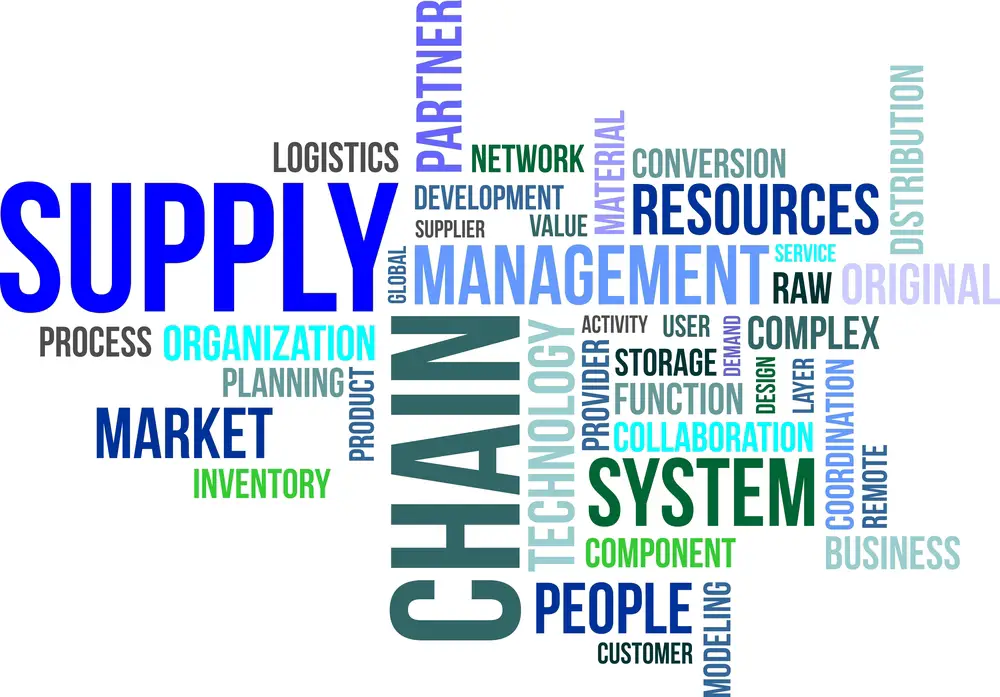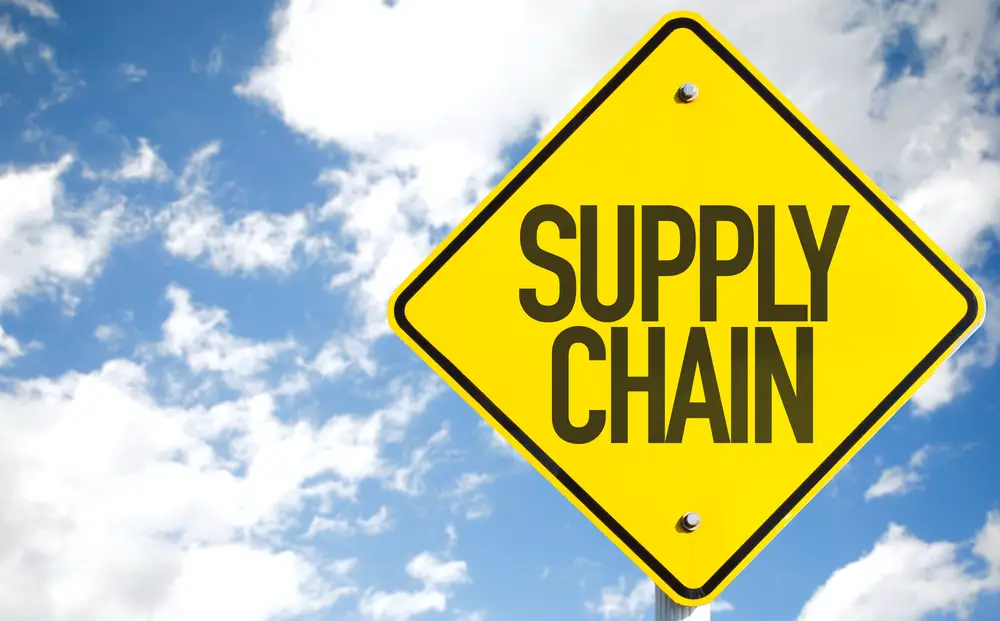It is essential for organizations to understand the potential risks that could affect their supply chain management to develop an effective strategy. This includes internal and external threats, such as disruption in the supply chain, cyber security threats, natural disasters, and pandemics.
After identifying all the risk factors, organizations should create a plan of action that outlines how they will respond to each one. This plan should include response times, communication strategies, decision-making protocols, contingency plans, and regular simulations through risk scenarios.
Managing a business’s supply chain can be complex, risky, and has a financial and brand impact. Several common risks, including environmental risks, are involved with supply chain management that every business should be aware of and have strategies to mitigate. This blog post will discuss the most common risks and ways to mitigate them.
Supply Chain Risk #1: Poor Visibility
Poor visibility into the supply chain is one of the most common risks businesses face when it comes to managing their supply chain. Without visibility, it can be difficult for a company to know where delays or problems may arise in the process, which can lead to costly mistakes or disruptions.
To mitigate this risk, businesses should invest in technologies such as enterprise resource planning (ERP) systems that provide real-time insights into every step of the supply chain process. This way, any potential issues can be identified and addressed quickly before they become a problem.
Supply Chain Risk #2: Disruptions from Global Events
Global events such as natural disasters or political unrest can also risk a company’s supply chain due to disruptions in transportation networks or production hubs. To mitigate this risk, companies should build redundancy into their supply chains by having multiple sources for raw materials or components and backup plans if production is disrupted at one plant or hub.
Having a disaster recovery plan in place is also key so that if an unexpected event happens, there are procedures already in place for responding quickly and minimizing disruption. Examples include labor market risks that might involve primary and secondary suppliers.
Supply Chain Risk #3: Cybersecurity Vulnerabilities
Cybersecurity vulnerabilities are another risk associated with managing a company’s supply chain, as hackers may try to access confidential information stored on a company’s networks or systems.
To protect against this type of risk, companies should ensure their systems are up-to-date with the latest security patches and use strong passwords across all accounts and devices. Additionally, companies should train employees on best practices for cybersecurity. They are aware of potential threats and how to avoid them.
Data Breach
Data breaches pose another potential risk for supply chains. Data security must be taken seriously to protect customer data and proprietary information related to research and development or trade secrets.
It’s important to use secure protocols when transferring files or data online and encrypting sensitive data stored on computers or cloud systems. Access controls should be implemented for all users with elevated privileges so that only those who need access can view sensitive information.
Finally, regular audits should be conducted to ensure no unauthorized access has been granted and that any vulnerabilities have been addressed promptly.
Changing supply chains has influenced multinationals in the past decade – whether it is climate change or pandemics. As the risks are huge and varied, the companies are implementing broader supplier-chain risk management strategies, especially in trade compliance inspections, imports/exports, supplier evaluations, and post-entry audits.
Types of supply chain risks.
Supply chain risk management describes business actions taken to assess risk within an end-to-end supply chain. There can be a variety of external risks affecting a company.
Internal supply chain risks
It describes any supply chain factors you control and is identified or monitored by software, robust analytical software, or other technologies, including IoT. Although internal supplier risks are less severe than external, the consequences remain unavoidable.
It is essential that we understand what supply chains can cause and how they impact us. If you know the potential risks of the supply chain, you can reduce the likelihood of it being resolved.
External supply chain risks
These global supply chain risks come from a third party. However, this is a difficult process and requires much more money and time. Involve partners in risk identification to mitigate risk of external nature.
Supply Chain Risk Mitigation strategies
Effective supply chain risk mitigation strategies can help organizations reduce their overall exposure to potential losses and disruptions. To do this, companies should focus on understanding the sources of risk in the supply chain, analyzing how these risks could impact operations, and implementing measures to reduce or manage these risks.
Common approaches include diversifying supplier networks, incorporating quality control systems, investing in new technologies (like blockchain), and mitigating contract-related risks.
Through proven supply chain risk mitigation strategies, companies can identify the hazards that exist throughout their supply chain. These risks can lead to a variety of costly and reputation-damaging problems.
Lower quality products and services; unsafe practices; and increased safety incidents; businesses are shut down, resulting in bad publicity and reputation loss; and fines if they fail to comply with the law.

Critique Your Risk Exposure
Perform supplier audits, examine potential supply-chain disruptions scenarios, and identify potential risks. Are parts of our supplier network exposed to economic, environmental, regulatory, or labor risks?
How many reports can your supplier make on a certain incident? How can we know? Can you tell a company if someone has the qualifications to complete a job? Is this person able to acquire all the skills and tools necessary? Get a risk assessment today to uncover hidden risks. It is impossible for anyone to improve on anything they do not know.
Verify and monitor insurance coverage
Ensure your supplier provides all of the required insurance for your needs, besides ensuring your cargo trade credit insurance is covered.
This can be done by combining two repositories, internal and external risks. It is here that all supplier insurance documents are saved to ensure the insurance professionals can review and verify the necessary types and levels of coverage are obtained and ensure that clients define the limits accurately.
Establish Diversified Suppliers
Find primary and second supply providers at different international locations for optimum supply-chain stability and protection against weather, labor politics, & economic events. Keep up to date with all potential change risks (including supply chain disruption).
Be transparent and share information
Your supplier should know the correct and current forecast for the sales projection and the decline forecasts for this period. It allows your team to collaborate to anticipate the potential problem and reduce the consequences.
Ensure the quality of Each Supplier
Obtain information about a potential supplier before approving one supplier. Quality products Sources of material Employee Management Partner involvement Financial integrity and stability.
Prioritize Potential Risks
Supplier risk is a priority according to the probability. All these should then be evaluated to determine the possible economic and branding impact. Start with minimizing your risk and then work on it.
Plan for risk
When you know the risk factors, you can make a plan to deal with them. Invite partners to the supplier risk mitigation program. Bring and involve your supplier: Transport carrier, data center customer.
Compete and Win With an Intelligent Supply Chain risks
Build operational agility using analytics, automation, and a new deliverable model. Supply chains are gases-generating machinery that drives motors at manufacturing sites and retail sites. Without it, your products can’t be sold, stock cannot be bought, or profits cannot grow.
Unfortunately, disruption in this supply chain can happen and force retailers and manufacturers to get everything right. The Gartner survey revealed that only 21% of respondents were highly confident about their network.

Know your business partners: Supplier evaluation and selection
Though many risks are caused primarily by events outside the control of an organization, the supply chain is a network of business relations that companies control greatly from the supplier.
It might look obvious, so businesses should know who is their partner and if they could potentially threaten the supply chain. Many multinational corporations have more than a thousand customers across the entire world, but such varied arrangements only demonstrate that absolute transparency has to be maintained across the chain.
Know your business partners
In order not to diminish a product you don’t know, it can make an enormous impact on the customer. Consequently, for example, if a third-level provider has abused child labor or violated US sanctions, the public can negatively impact the industry’s reputation.
Conclusion
Managing a business’s supply chain comes with many risks that must be addressed for it to run smoothly and efficiently. Poor visibility into the process, disruptions from global events, and cybersecurity vulnerabilities are some of the most common risks associated with supply chain management.
Through investments in technologies such as ERP systems, building redundancy into your processes, and implementing strong cybersecurity measures, you can help protect your business from potential disruption due to these common risks. Investing time now into creating mitigation plans will go a long way toward ensuring your business’s success.
Have you read?
Learn about strategic risk management
How to mitigate vendor risks and supplier performance
Key elements of a risk register
Supply chain risk management archives

Chris Ekai is a Risk Management expert with over 10 years of experience in the field. He has a Master’s(MSc) degree in Risk Management from University of Portsmouth and is a CPA and Finance professional. He currently works as a Content Manager at Risk Publishing, writing about Enterprise Risk Management, Business Continuity Management and Project Management.


